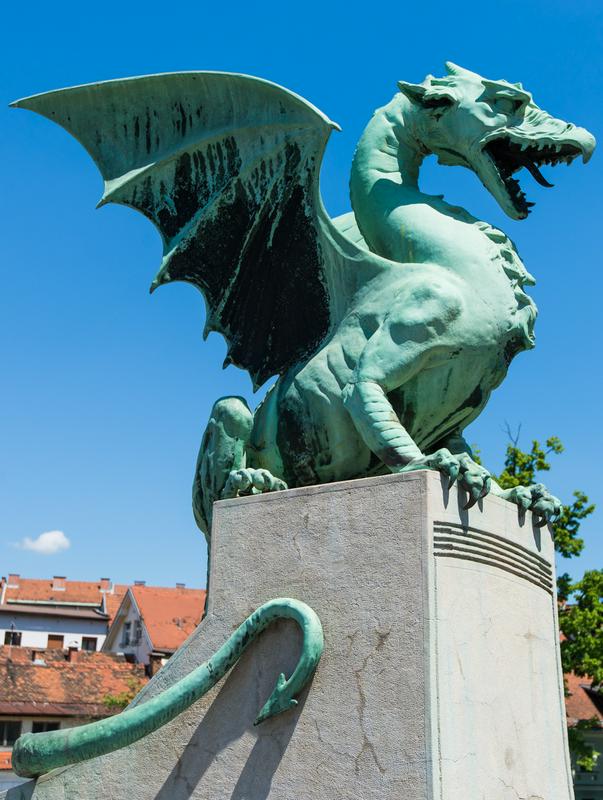
Few visitors to Ljubljana fail to notice the symbol of Slovenia’s capital. If the city’s dragon-bedecked coat-of-arms doesn’t capture their attention, they surely notice the dragons guarding one of the bridges over the Ljubljanica River - a bridge officially known as the Dragon Bridge.
According to legend, the dragon immortalizes the story of Jason and the Argonauts. After they had captured the Golden Fleece, they were fleeing from their enemies when they mistakenly made their way up the Danube and the Sava. Finally, sailing on the Ljubljana River, they stopped near the future site of Slovenia’s capital, where they battled a ferocious dragon. They vanquished the dragon, and the defeated creature was immortalized as Ljubljana’s symbol.
There are other theories regarding the dragon’s origins. One states that the dragon symbolizes the mythical beast slain by St. George. Others argue that the dragon began as a simple decoration on the city walls.
Whatever its origins, Ljubljana has embraced the dragon as its symbol, extending far beyond just the city’s coat-of-arms. In 1901, the Dragon Bridge over the Ljubljanica was inaugurated. An eye-catching art nouveau structure, it was one of the first bridges in this part of Europe to use reinforced concrete. Tourists still pose for pictures with the bridge’s green dragon sculptures. In all, sixteen small dragons accompany four larger ones - all of them designed by the architect Giorgio Zaninovich and made by Alexander Mathias Beschorner, a Vienna-based metalsmith. Originally, Zaninovich had wanted to place winged lions on the bridge, but was persuaded to incorporate Ljubljana’s traditional symbol instead.
The bridge was first named in honor of Franz Joseph, but the dragons were so popular that it was officially renamed the Dragon Bridge immediately after World War I, when former Austrian Emperors fell out of favor.
Since then, dragons have appeared on batteries, beer cans, sports team logos, and around the city on everything from façades to railings and door handles. Just as Triglav serves as Slovenia’s symbol, the ancient dragon has emerged as the unmistakable icon of the country’s capital.

































































